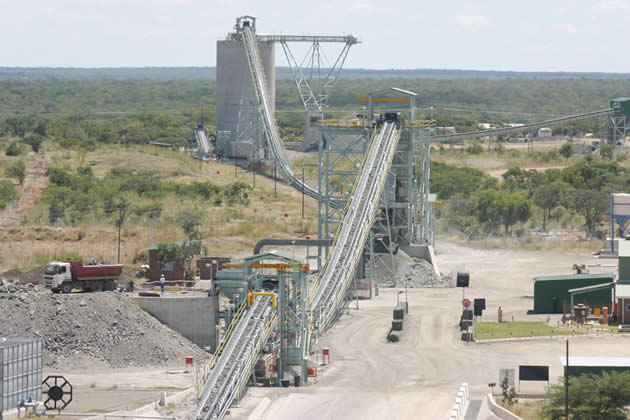
The Sunday Mail


Mine
Zimbabwe lost millions of dollars in potential revenue via the 2011-2015 chrome ore export ban, with indications that Treasury failed to realise an average of US$4 million annually through remittances from two miners.
Government imposed the moratorium on chrome ore exports to force producers to invest in value adding machinery like smelters.
It is estimated that 2 000 tonnes of processed chrome generates close to US$1 million compared to US$240 000 when sold as ore.
The Sunday Mail Business has established that Zimbabwe Alloys Limited (ZimAlloys) and Zimasco could have collectively contributed close to US$20 million in remittances from ore sales during the moratorium.
The country has about 10 small and medium-sized chrome ore producers, while ZimAlloys and Zimasco operate on a large-scale. According to ZimAlloys, the recent lifting of the chrome ore ban will see the company contributing about US$220 000 monthly to Treasury from production of about 8 000 tonnes.
The country has three operational smelters operated by Zimasco, Afrochine and Xin Yu while five other firms – Oliken, MonaChrome, ZimAlloys, Maranatha and Wel Mine – closed their furnaces due to viability challenges.
While Zimasco had not responded to questions from The Sunday Mail Business at the time of writing, it has been gathered that the company produces about 600 000 tonnes of chrome ore annually and 210 000 tonnes of the refined mineral.
Information shows that the ban on chrome ore export had seen companies sell the raw mineral for about US$65 locally compared to an average US$120 on the international markets.
ZimAlloys executive director Mr Mike Dzinoreva said the mining company was sitting on a stockpile of 50 000 tonnes of processed chrome and welcomed the lifting of the ban on ore exports.
“We were now disposing our stockpiles locally due to the ban.
“However, the lifting of the ban is a positive development to the industry which is currently struggling under low ferrochrome prices and high input costs.
“The lifting of the ban is really appreciated as it will bring some relief to our cash flows and help us restore smelting capacity.
“We also envisage a lot of downstream benefits which include, inter alia, the creation of plus or minus 2 000 jobs,” said Mr Dzinoreva.
It is understood that the company owed Interfin Bank about US$20 million which was bonded to chrome exports.
ZimAlloys, a producer of low carbon ferrochrome and which until 2005 was owned by Anglo American Plc, owns 30 to 40 percent of Zimbabwe’s chrome ore reserves. Government recently admitted it had lost potential revenue due to the effect of the ban.
Mines and Mining Development Ministers Walter Chidhakwa said, “It is Government’s objective that the temporary lifting of the ban on the export of chrome ore should generate additional foreign currency earnings to boost market liquidity and expand the Government ’s revenue base.
“The optimum production, smelting and export of chrome ore would result in major producers such as Zimasco being able to generate income for expanding their smelting capacity.
“The economic livelihoods of small scale producers would also be restored, and revenue to Government would be boosted through royalty fees payments, and other taxes such as corporate tax and Pay As You Earn.”
Government collects 22,8 percent from chrome exports. Minister Chidhakwa said Government would ensure that only excess chrome ore was exported.
“To facilitate smooth implementation of these measures, the Reserve Bank shall in due course, issue detailed operational guidelines, export modalities and a strict monitoring framework that provides a consistent link between production smelting for exportable ferrochrome and exportation of excess chrome ore.”
He added that Government had reduced electricity tariffs form US$0,08 to US$0,067 per kilowatt per hour for chrome producers.



